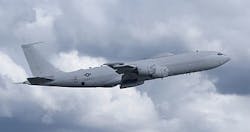Aluminum Association: Innovations keep aluminum the material of choice for aerospace
ARLINGTON, Va., 17 Sept. 2012. “Think of composites as the new aluminum,” James Palmer, an economic development manager of the Washington State Department of Commerce, is quoted as saying in a release on composites from the Office of Washington Lieutenant Governor Brad Owens. The aluminum industry begs to differ.
“Aluminum has been used in aviation since the birth of the industry; I don’t see it being replaced by composites any time soon,” says Heidi Brock, president of the Aluminum Association. “Lightweight, strong and durable with a positive environmental footprint, aluminum stands above competing materials, especially in the transportation sector.”
Aluminum has been the go-to material for aerospace applications for more than 100 years including the crafts the went to the moon, heralded victory in World War II and now are used to transverse the global in mere hours. Daily, the industry is involved in developing new innovations that maintain aluminum as the material of choice for aerospace engineers, designers and manufacturers.
Aluminum has been the darling of the global aviation industry since the Wright Brothers took flight in Kitty Hawk, NC. The brother’s selected a crankcase made of aluminum versus cast iron to save weight. Since 1903, aluminum has been used because of its lightweight yet strong nature for the trials of aviation and space flight.
Aluminum’s lightweight and durability offer fuel-efficient transportation with cost and environmental efficiencies. The transportation sector remains the fast-growing segment of the North American and global aluminum industry.
In 2009, the aluminum industry in Washington employed more than 2,600 workers and supported the employment of more than 10,000 in dependent upstream and downstream industries. The total economic impact was more than 12,800 jobs; the value of the economic activity was $2.2 billion.
